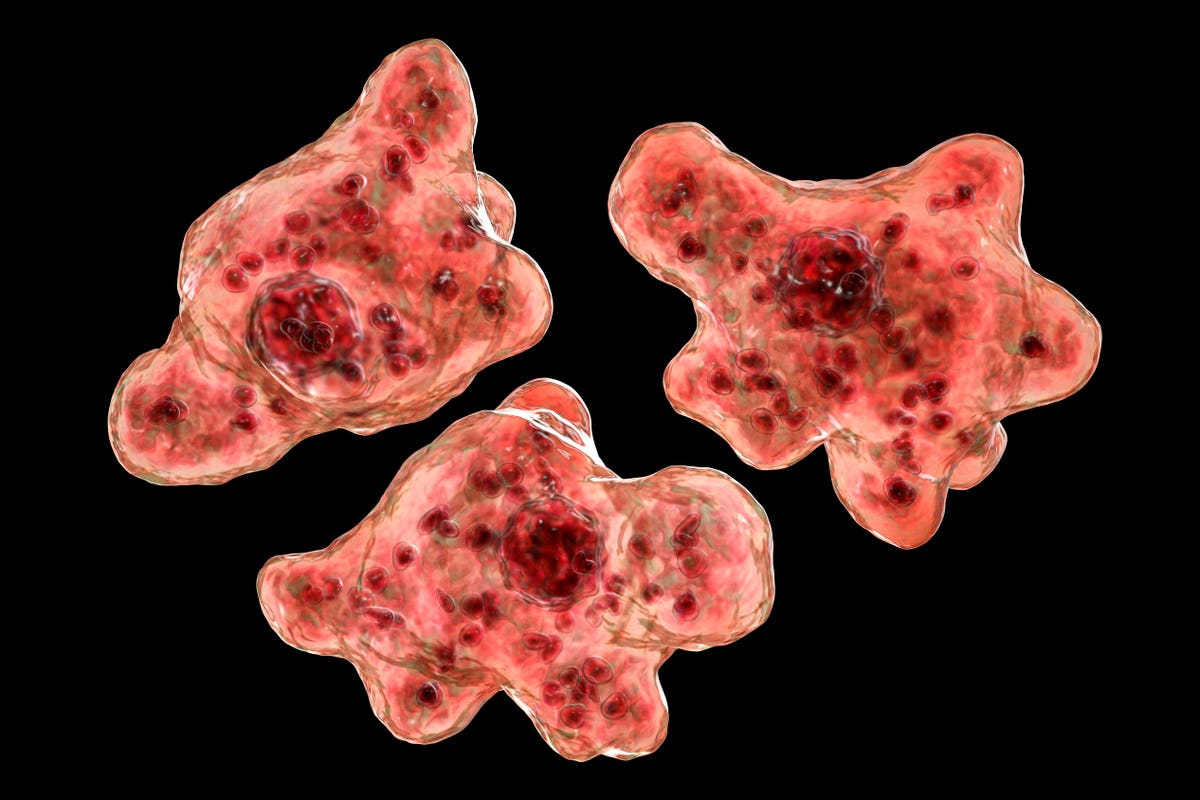Infection
Brain-Eating Amoeba Kills 2nd Person in July, This Time In Georgia
You figure that anything with the nickname brain-eating is not going to be good. That certainly applies to Naegleria fowleri, which has been dubbed the “brain-eating amoeba.” And this month two people have died from the extensive brain damage caused by this single-celled microorganism. Earlier this month, a two-year-old child died after visiting Ash Springs in Nevada, which are hot springs located approximately 100 miles north of Las Vegas. And on July 28, the Georgia Department of Public Health announced that a Georgia resident has also died from such an infection after swimming in a freshwater lake or pond in Georgia. The Department of Public Health did not provide any further details about the individual or where that individual had been swimming.
Yeah, there’s nothing really positive about an amoeba that eats your brain. N. fowleri is a foul organism indeed. It typically lives in warm fresh water and can enter your body when water with the amoeba goes up your nose. And the amoeba seemingly knows that your nose is a gateway to your brain. It just keeps swimming, just keeps swimming to your brain where it starts to munch away.
The resulting damage is called primary amebic meningoencephalitis (PAM). PAM is terrible—meaning this syndrome and not all people named Pam. “Meningo” stands for the meninges, which are the membranes that wrap around your brain sort of like Saran Wrap around a knish. “Encephalo-” stands for “brain.” And the suffix “-itis” means inflammation. So PAM is essentially widespread inflammation of the brain and the membranes wrapping around the brain caused by amoebas treating the insides of your head like a buffet.
The major problem is that it can take a while to notice such an infection. These amoebas don’t chew loudly and symptoms may not emerge during the first one-to-nine days of the infection. Even when symptoms like a fever, nausea, vomiting, and a bad headache in the front of your head start, a brain-eating amoeba may not the first thing that you think of when your have a headache. That’s why people don’t tend to get diagnosed and treated while PAM is still in Stage One, as described by the Centers for Disease Control and Prevention (CDC).
Things get a bit more obvious at Stage Two, which is marked by more severe symptoms such as a stiff neck, seizures, altered mental status, hallucinations, or a coma. However, even at this point, a brain-eating amoeba infection can be easily mistaken for a more common problem like bacterial meningitis. All of this may delay the administration of miltefosine, a drug that can kill the amoeba, and the induction of hypothermia—lowering you body temperature—to reduce the swelling of your brain.
Such delayed diagnosis and treatment is a big reason why this infection is almost always fatal within 18 days of when symptoms first appear. There’s been only 157 cases of N. fowleri infections having been reported to the Centers for Disease Control and Prevention (CDC) from 1962 through 2022. However, as study published in the Journal of the Pediatric Infectious Diseases Society detailed between 1962 and 2018, only four people in the U.S. managed to survive PAM. In fact, half of those infected ended up dying within five days of first noticing symptoms.
Those aren’t great odds. So it’s best to keep N. fowleri from getting into your brain in the first place. So try to keep any type of fresh water from going up your nose. That means holding your nose or wearing nose plus when diving into lakes, rivers, hot springs, swimming pools, water heaters, industrial plants, or any other body of water that is not well-chlorinated. If you are swimming in a water heater or a water tank in an industrial plant, you’ve probably got other things to worry about as well.
And if someone is telling your to pour tap water up your nose using a Neti pot or any other contraption, don’t. People have gotten the amoeba through this practice as well.
One more thing. The amoeba can be found in soil as well. Therefore, shoving soil up your nose is a bad idea too. The risk of N. fowleri infections shouldn’t be the only reason why your shouldn’t shove soil up your noise, though.
N. fowleri isn’t everywhere. It tends to prefer warmer water. Most of the infections have resulted during the Summer months in the 15 Southernmost states of the Continental U.S., with over half of the case having occurred in Texas and Florida, according to the CDC. That may change in the coming years with climate change, you know that thing that some people are claiming is not big deal. Nevada isn’t one of the 15 Southernmost states in the U.S. And as the average temperature had gotten warmer and warmer more and more infections have been appearing in more Northern states, as a publication in the Journal of Infectious Diseases described.

